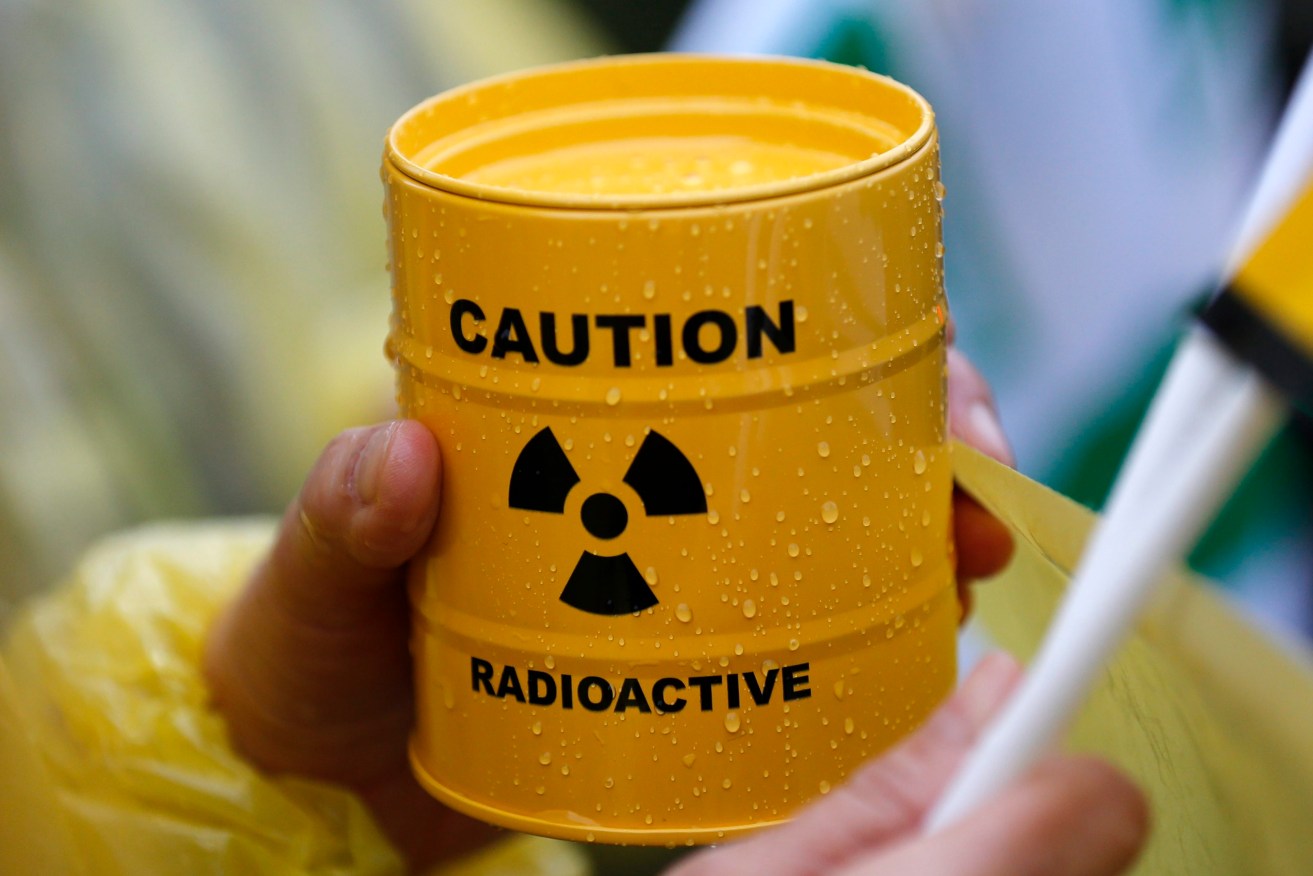Long-term impact of quick nuclear dump fix
Legislation to set up a national nuclear waste storage site on South Australia’s Eyre Peninsula is being debated by federal parliament. Margaret Beavis argues that both the site selection process and storage plans for long-lived intermediate nuclear waste are unacceptable.

Photo: Ritchie B Tongo, EPA.
Today, the government is planning a Senate vote to lock in moving highly radioactive nuclear waste to Kimba.
This bill will deny any judicial oversight or review, despite major flaws in the proposal.
However there is no rush to find a home for Australia’s nuclear waste. The federal nuclear regulator, ARPANSA, has been crystal clear; the nuclear waste at the ANSTO Lucas Heights reactor can stay there safely for decades.
Claims that moving the waste is urgently needed to continue nuclear medicine in Australia are patently false.
As a GP, I use nuclear medicine and ongoing access is necessary.
Other arguments that we need to consolidate nuclear waste at one site are misleading, given hospitals will be handling waste for as long as there is nuclear medicine.
Hospitals currently manage their own nuclear medicine wastes on a ‘delay and decay’ basis on site; after use in a patient, the waste very rapidly loses its radioactivity. After a few months the vast majority is safe enough to go to a normal rubbish tip.
There will always be multiple sites.
Many South Australians would be unaware that this proposed “temporary storage” of nuclear waste in Kimba is a second-rate cheap solution. World’s best practice requires deep geological disposal, which costs a lot more.
Countries such as Finland have spent over 40 years researching locations and properly involving communities. They are only now building a deep geological repository, at a cost of over A$5 billion.
In contrast, the Kimba plan will cost shift onto future generations, who will be left to do the job properly at great expense.
Indeed, whilst the government promises to move the waste yet again some decades hence, there are no plans whatsoever for proper longer-term disposal.
It is highly likely to end up stranded at Kimba and a significant liability for South Australians.
In addition to the dodgy storage proposal, there are many other flaws. The big ones include: four years of a misleading government marketing campaign, a deciding vote using a biased sample of residents and a complete disregard of profound opposition by the Traditional Owners.
The site selection process has been poor. The community has endured several years of very one-sided marketing, and remains deeply divided on the issue.
Low-level waste has been the major focus thoughout, yet the elephant in the room is the intermediate waste that is radioactive for over 10,000 years.
The community vote was based on town boundaries, which biased the sample towards businesses who may profit from the facility. It excluded farmers who are closer to the site than the township.
At the alternative Hawker site last year, a much less biased vote with a 50 km radius was used, and the waste was clearly rejected.
This current proposal also rides rough shod over the clear opposition of the traditional owners. In April 2020 the Federal Parliament’s own Joint Committee on Human Rights found the National Radioactive Waste Management Act does not sufficiently protect the Barngarla’s rights and interests.
The Federal Government admits its proposed legislation will deny farmers, Traditional Owners and other interested parties a right to a judicial review.
Indeed, the legislation is designed to do just that.
This bill locks in a second-rate process for a second-rate facility that will be a major future liability for South Australians.
Highly radioactive intermediate level nuclear waste is going to be with us for a very, very long time.
There is plenty of time to do it right. We need a proper disposal plan, not moving the waste unnecessarily to a temporary store and leaving it for our kids to pay for.
This waste is highly radioactive for millennia. If this legislation passes, it will come back and haunt South Australians for generations to come.
Margaret Beavis is a GP and vice president of the Medical Association for Prevention of War.




